- Sowing Cucumbers: Best Practices for Successful Growth
- 1. Choose the Right Time
- 2. Prepare the Soil
- 3. Start Indoors or Direct Sow
- 4. Proper Spacing
- 5. Provide Ample Sunlight
- 6. Maintain Adequate Moisture
- 7. Fertilize Appropriately
- 8. Monitor for Pests and Diseases
- 9. Harvesting
- 10. Succession Planting
- Picking the Right Cucumber Varieties for Your Garden
- 1. Determinate or Indeterminate:
- 2. Pickling or Slicing:
- 3. Disease Resistance:
- 4. Growing Space:
- 5. Taste and Texture:
- 6. Days to Maturity:
- 7. Hybrid or Heirloom:
- Planting Cucumbers: Step-by-Step Guide for a Healthy Start
- Training Cucumber Plants: Techniques for Maximum Yield
- Trellising
- Vining
- Training in Cages
- Harvesting Cucumbers: Knowing When and How to Pick
- Signs of Readiness
- Picking Techniques
- Harvesting Frequency
- Storing Cucumbers
- Conclusion
- Common Problems and Solutions for Cucumber Cultivation
- Pest Infestation
- Disease
- Poor Fruit Set
- Yellowing Leaves
- Vine Decline
- Cucumber Diseases: Prevention and Control Measures
- Introduction
- Common Cucumber Diseases
- Prevention and Control Measures
- Conclusion
- Cucumber Pests: Identification and Natural Pest Control Methods
- 1. Cucumber Beetle
- 2. Aphids
- 3. Powdery Mildew
- 4. Slugs and Snails
- “Question-Answer”
- When is the best time to sow cucumber seeds?
- What is the best way to pick cucumbers?
- Can cucumbers be grown in containers?
- How should cucumbers be trained to grow up a trellis?
- When are cucumbers ready to harvest?
- “Video” Cucumbers love this white top dressing! Cucumbers will fill you up with a premature harvest
Cucumbers are a popular and versatile vegetable that can be enjoyed in a variety of dishes. Whether you are growing cucumbers for pickles or for fresh eating, it’s important to follow expert tips to ensure a successful harvest. From sowing the seeds to training the vines, here are some expert tips to help you grow and harvest delicious cucumbers.
When it comes to sowing cucumber seeds, it’s important to choose a sunny location with well-drained soil. Cucumbers thrive in warm, humid environments, so it’s best to sow the seeds when the soil temperature reaches around 60°F (15.5°C). To encourage healthy growth, mix compost or well-rotted manure into the soil before sowing. Plant the seeds about 1 inch (2.5 cm) deep and space them 2 to 3 feet (60 to 90 cm) apart.
As the cucumber plants start to grow, it’s important to provide them with support. Cucumber vines can quickly spread and take up a lot of space, so training them to grow vertically can save valuable garden space. Use trellises, stakes, or bamboo poles to create a support structure for the vines. Be sure to secure the vines to the support as they grow using soft ties or plant clips. This will prevent the vines from sprawling on the ground and reduce the risk of diseases.
When it’s time to harvest the cucumbers, it’s important to check them regularly to ensure they are picked at the right time. Cucumbers are typically ready to harvest when they are firm, about 6 to 8 inches (15 to 20 cm) long, and have a dark green color. Avoid picking cucumbers that are yellow or have large spines, as these are signs of overripe fruits. To harvest, gently twist or cut the cucumber from the vine using a sharp knife or pruning shears.
With these expert tips on sowing, picking, planting, training, and harvesting cucumbers, you can enjoy a bountiful harvest of delicious and fresh cucumbers. Whether you are a seasoned gardener or a beginner, growing cucumbers can be a rewarding and enjoyable experience. So, roll up your sleeves, get your gardening tools ready, and start growing your own cucumbers!
Sowing Cucumbers: Best Practices for Successful Growth
Growing cucumbers can be a rewarding experience, providing you with a bountiful harvest of fresh and delicious vegetables. To ensure successful growth, it is important to follow some best practices when sowing cucumber seeds. Here are some tips to help you get started:
1. Choose the Right Time
Cucumbers are warm-season plants that thrive in temperatures between 70-90°F. It is crucial to sow cucumber seeds when the soil has warmed up sufficiently, usually around 2-3 weeks after the last frost date.
2. Prepare the Soil
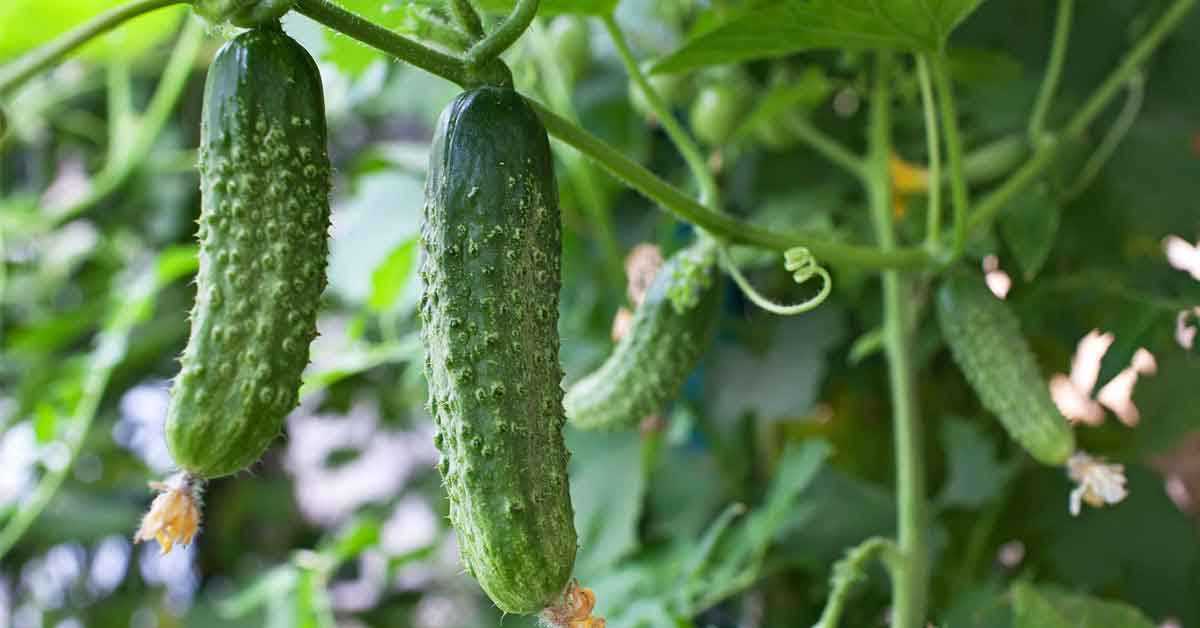
Cucumbers prefer well-drained soil that is rich in organic matter. Before sowing, prepare the soil by removing any weeds, rocks, or other debris. Mix in compost or aged manure to improve soil fertility and drainage.
3. Start Indoors or Direct Sow
Cucumber seeds can be started indoors in pots or trays about 3-4 weeks before the desired planting date. Alternatively, you can directly sow the seeds into the prepared garden bed. If starting indoors, use biodegradable pots that can be planted directly into the soil to avoid disturbing the delicate root system during transplanting.
4. Proper Spacing
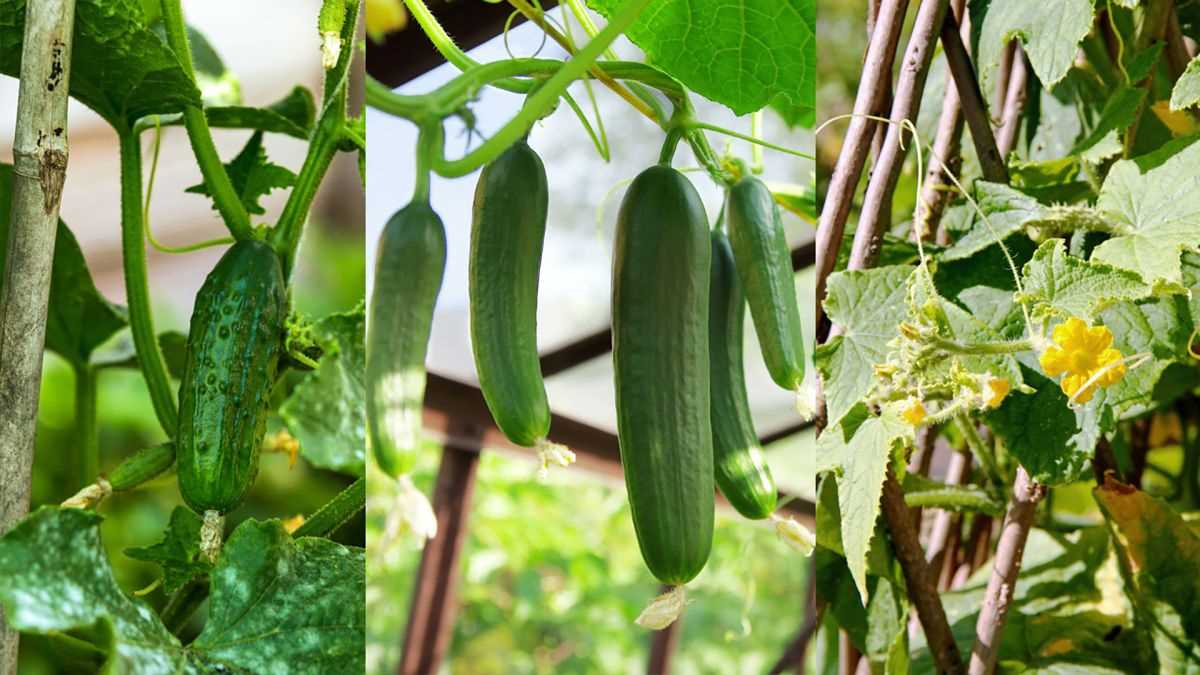
Cucumbers require adequate space to grow and spread their vines. Plant seeds or seedlings at least 12-18 inches apart. If growing cucumbers vertically, provide a trellis or support system to train the vines, which can help save space and improve air circulation.
5. Provide Ample Sunlight
Cucumbers thrive in full sun, so choose a location in your garden that receives at least 6-8 hours of direct sunlight daily. Insufficient sunlight can result in weak and leggy plants with poor fruit production.
6. Maintain Adequate Moisture
Keep the soil consistently moist but not waterlogged. Cucumbers have shallow roots, so regular watering is essential, especially during hot and dry weather. Use mulch around the plants to help retain moisture and reduce weed growth.
7. Fertilize Appropriately
Feed your cucumber plants with a balanced organic fertilizer or compost every 4-6 weeks to ensure they receive the necessary nutrients for healthy growth. Avoid excessive use of nitrogen, as it can lead to excessive foliage growth at the expense of fruit production.
8. Monitor for Pests and Diseases
Keep a close eye on your cucumber plants for any signs of pests or diseases. Common problems include cucumber beetles, aphids, powdery mildew, and bacterial wilt. Take appropriate measures, such as using organic pest control methods or removing infected plants, to prevent the spread of pests and diseases.
9. Harvesting
Cucumbers are ready for harvest when they reach the desired size and color, usually around 8-10 inches in length and a bright green color. Regularly pick mature cucumbers to encourage more fruit production and prevent over-ripening.
10. Succession Planting
To prolong your cucumber harvest, consider succession planting. Plant new cucumber seeds every 2-3 weeks throughout the growing season. This will ensure a continuous supply of fresh cucumbers.
By following these best practices for sowing cucumbers, you can increase your chances of successful growth and enjoy a plentiful cucumber harvest throughout the season. Happy gardening!
Picking the Right Cucumber Varieties for Your Garden
When it comes to choosing cucumber varieties for your garden, it’s important to consider factors such as your climate, growing conditions, and personal preferences. With so many different types of cucumbers available, it can be overwhelming to know where to start. Here are some tips to help you pick the right cucumber varieties for your garden:
1. Determinate or Indeterminate:
Determine whether you want determinate or indeterminate cucumber plants. Determinate varieties produce a set number of cucumbers and then stop growing, making them great for small gardens or containers. Indeterminate varieties continue to produce cucumbers throughout the season, providing a longer harvest period.
2. Pickling or Slicing:
Decide whether you want to grow pickling cucumbers or slicing cucumbers. Pickling cucumbers are smaller and have a crisp texture, making them perfect for preserving. Slicing cucumbers are larger and have a milder flavor, making them ideal for fresh eating.
3. Disease Resistance:
Check for disease resistance when selecting cucumber varieties. Common cucumber diseases include powdery mildew, downy mildew, and cucumber mosaic virus. Look for varieties that are resistant to these diseases to help ensure a successful harvest.
4. Growing Space:
Consider the space available in your garden when choosing cucumber varieties. Some cucumber plants, like vining varieties, require trellises or structures to support their growth. Others, like bush varieties, are more compact and can be grown in smaller spaces.
5. Taste and Texture:
Think about your personal preferences when it comes to taste and texture. Some cucumber varieties have a stronger flavor, while others are milder. Some have a crisp texture, while others are more tender. Read descriptions and reviews of different varieties to find ones that suit your taste buds.
6. Days to Maturity:
Consider the days to maturity for cucumber varieties. This is the time it takes from when you sow the seeds to when the cucumbers are ready to be harvested. If you have a short growing season, look for varieties with a shorter days to maturity.
7. Hybrid or Heirloom:
Decide whether you want to grow hybrid or heirloom cucumber varieties. Hybrid varieties are often bred for disease resistance and yield, while heirloom varieties have been passed down through generations and often have unique flavors and characteristics.
By considering these factors, you can narrow down your options and choose the cucumber varieties that are best suited for your garden. Whether you’re looking for pickling cucumbers for preserving or slicing cucumbers for fresh eating, there’s a cucumber variety out there that’s perfect for you.
Planting Cucumbers: Step-by-Step Guide for a Healthy Start
Planting cucumbers in your garden can be a rewarding experience, especially when you get to enjoy the delicious fruits of your labor. To ensure a healthy start for your cucumbers, follow these step-by-step guidelines:
- Choose a Suitable Location: Select a sunny spot in your garden that receives at least 6-8 hours of direct sunlight per day. Cucumbers thrive in warm temperatures, so choose a location that is sheltered from cold winds.
- Prepare the Soil: Cucumbers prefer well-draining soil that is rich in organic matter. Before planting, amend the soil with compost or aged manure to improve fertility and drainage.
- Start Seeds Indoors: If you live in a region with a short growing season, it is recommended to start cucumber seeds indoors 2-4 weeks before the last frost date. Use seed trays or pots filled with seed starting mix and provide bottom heat to promote germination.
- Direct Sow or Transplant: Alternatively, you can directly sow cucumber seeds in the garden after all danger of frost has passed. Plant the seeds in rows or hills, with a spacing of about 12-24 inches between plants.
- Provide Support: Cucumbers are climbing plants that benefit from vertical support. Install trellises, stakes, or cages in the garden to help the vines grow upright, prevent fruit rot, and save space.
- Watering and Mulching: Cucumbers need regular watering, especially during hot and dry weather. Keep the soil consistently moist, but avoid overwatering to prevent root rot. Mulch around the plants to conserve moisture and suppress weed growth.
- Fertilize as Needed: Cucumbers are heavy feeders, so it is important to provide them with regular nutrients. Apply a balanced fertilizer or compost tea every 2-3 weeks throughout the growing season to promote healthy growth and abundant fruiting.
- Monitor for Pests and Diseases: Keep an eye out for common cucumber pests such as aphids, cucumber beetles, and powdery mildew. Regularly inspect the plants and take appropriate measures to control and prevent infestations.
- Harvesting: Harvest cucumbers when they are firm, crisp, and have reached the desired size. Pick them regularly to encourage continuous production. Use sharp, clean scissors or a knife to cut the cucumbers from the vine without damaging the plant.
By following these step-by-step guidelines, you can ensure a healthy start for your cucumber plants and enjoy a bountiful harvest throughout the growing season. Happy planting!
Training Cucumber Plants: Techniques for Maximum Yield
Cucumber plants are vigorous climbers that require training and support to maximize their yield. Proper training techniques not only ensure healthy growth but also enhance air circulation, prevent disease, and make harvesting easier. Here are some effective training methods to get the most out of your cucumber plants:
Trellising
One popular method of training cucumber plants is trellising. A trellis is a vertical structure made of wood, metal, or plastic that allows the plants to climb and support their growth. Trellising helps keep the cucumber plants upright, preventing them from sprawling on the ground.
Here’s how to trellis cucumber plants:
- Install the trellis before planting the cucumber seeds or seedlings.
- Place the trellis at least 6 feet tall to accommodate the plants’ vertical growth.
- Plant the cucumber seedlings at the base of the trellis, spacing them according to the variety’s requirements.
- As the plants grow, gently guide the main stems through the trellis openings, ensuring they are supported.
- Secure any loose or trailing vines to the trellis using twine or plant clips.
- Regularly check the trellis for signs of damage and make any necessary repairs.
Vining
Vining is another training technique for cucumber plants that involves creating a support structure using strings or wires. This method allows the plants to grow vertically and reduces the risk of disease by keeping the foliage off the ground.
Follow these steps to train cucumber plants using the vining technique:
- Install a sturdy framework of posts, stakes, or poles around the cucumber plants.
- Attach strings or wires to the framework, starting at the base and running vertically along the plants’ rows.
- Tie the main stems of the cucumber plants to the strings or wires using soft garden twine.
- As the plants grow, continue tying the new growth to the strings or wires for support.
- Regularly trim any side shoots or suckers that emerge from the main stems.
- Monitor the strings or wires for tension and adjust as needed to prevent the plants from sagging or leaning.
Training in Cages
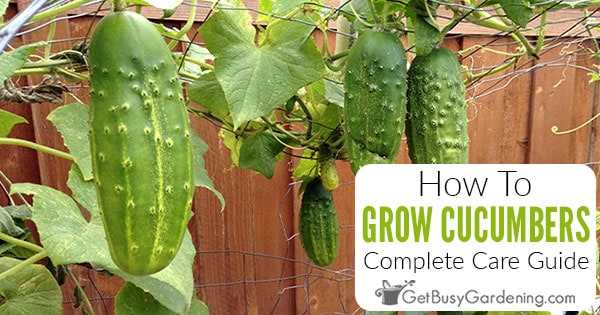
Using cages is an effective way to train cucumber plants while providing them with ample support. Cages keep the plants upright, reduce the risk of damage from wind or heavy rain, and make the fruits more accessible for harvesting.
Here’s how to train cucumber plants in cages:
- Choose sturdy wire cages with a diameter of at least 18 inches.
- Place the cages around the cucumber seedlings, ensuring they are centered and properly supported.
- Gently guide the main stems of the plants through the cage openings.
- Secure any loose or trailing vines to the cages using twine or plant clips.
- Regularly check the cages for signs of damage and make any necessary repairs.
- Prune the plants as needed by removing any side shoots or suckers that emerge from the main stems.
By implementing these training techniques, you can ensure healthy and productive cucumber plants that yield an abundance of delicious cucumbers for you to enjoy.
Harvesting Cucumbers: Knowing When and How to Pick
Harvesting cucumbers at the right time is crucial to ensure their flavor, texture, and nutritional value. Here are some expert tips to help you know when and how to pick cucumbers:
Signs of Readiness
- Size: Cucumbers should be at least 6 to 8 inches long, depending on the variety. Pick cucumbers when they reach the desired size.
- Color: Most cucumbers are harvested when they are still green. However, some varieties, like lemon cucumbers, turn yellow when ripe. Make sure to check the specific variety you are growing.
- Texture: The skin of ripe cucumbers should be firm and smooth. Avoid picking cucumbers with wrinkled or soft spots.
Picking Techniques
When picking cucumbers, it’s important to handle them gently to prevent bruising and damage. Here are some recommended techniques:
- Twisting: To remove a cucumber from the vine, gently twist it while holding the fruit with one hand and supporting the vine with the other. This helps to detach the cucumber without causing any harm.
- Pruning Shears: If twisting doesn’t work or if you want a clean cut, you can use pruning shears or a sharp knife to cut the stem about 1/4 inch above the cucumber.
Harvesting Frequency
Cucumbers grow rapidly, especially in warm weather. It’s important to check your cucumber plants daily during the harvest season to avoid over-ripening. Harvesting frequently also encourages the plant to produce more cucumbers.
Storing Cucumbers
After harvesting cucumbers, it’s best to use them as soon as possible for optimal freshness. If you need to store cucumbers, place them in a plastic bag and store them in the refrigerator. Cucumbers can stay fresh for up to a week when stored properly.
Conclusion
Harvesting cucumbers at the right time and using proper picking techniques ensures that you get the best tasting cucumbers from your garden. Remember to check the signs of readiness, handle them with care, and store them properly for maximum freshness. Enjoy the delicious flavor of homegrown cucumbers in your favorite recipes!
Common Problems and Solutions for Cucumber Cultivation
Pest Infestation
One common problem in cucumber cultivation is pest infestation. Pests like aphids, cucumber beetles, and spider mites can cause damage to the plants. To prevent pest infestation, regularly inspect the plants for signs of pests and take appropriate action. You can use insecticidal soaps or organic pest control methods to control pest populations.
Disease
Cucumbers are susceptible to various diseases, such as powdery mildew, downy mildew, and bacterial wilt. To prevent diseases, practice crop rotation by not planting cucumbers in the same spot every year. Ensure proper spacing between plants to improve air circulation and reduce humidity, which can promote disease. Regularly monitor the plants for signs of disease and take measures such as applying appropriate fungicides when necessary.
Poor Fruit Set
If your cucumber plants are not setting fruit well, the problem could be due to insufficient pollination. Cucumbers require pollination by bees or other pollinators to set fruit. If you are not seeing enough bees in your garden, you can try hand pollination by transferring pollen from the male flowers to the female flowers using a small brush or cotton swab.
Yellowing Leaves
Yellowing leaves can be a sign of nutrient deficiencies or overwatering. Make sure your cucumber plants receive adequate nutrients by using a balanced fertilizer and following the recommended dosages. Avoid overwatering your plants and ensure proper drainage to prevent waterlogging, which can lead to nutrient leaching and root rot.
Vine Decline
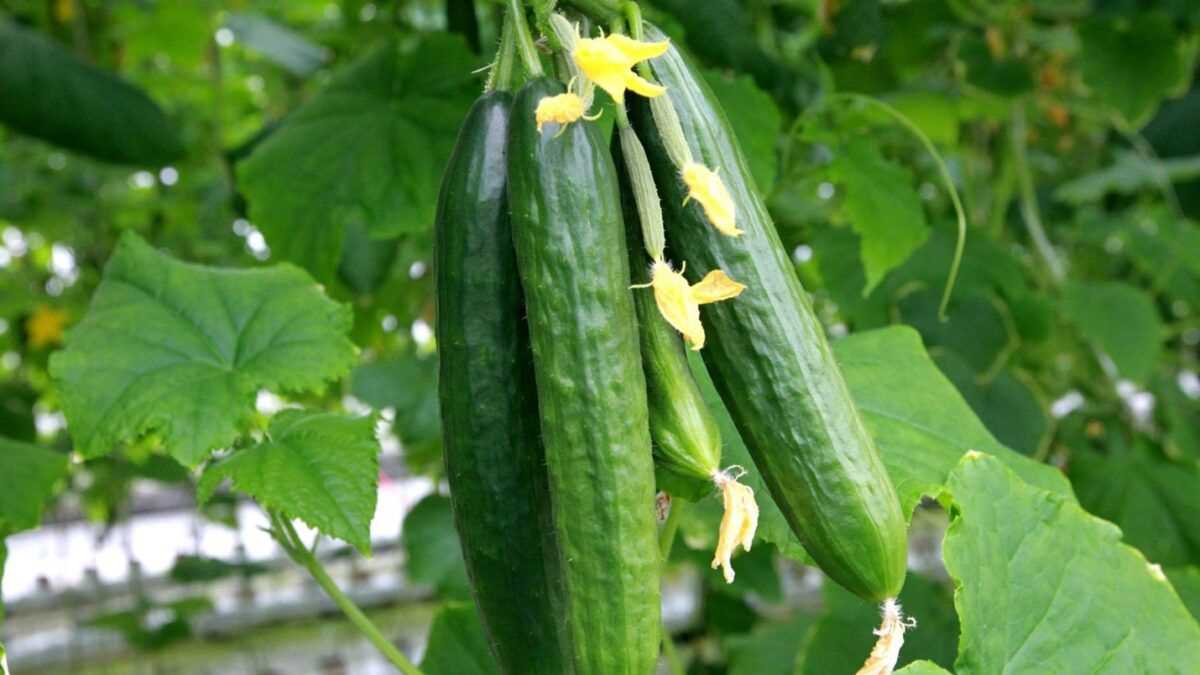
Another common problem in cucumber cultivation is vine decline, where the plant’s leaves and vines start wilting and dying. This can be caused by various factors such as fungal infections, water stress, or root damage. To prevent vine decline, practice good sanitation by removing and disposing of infected plants and avoid overwatering or underwatering your plants.
Cucumber Diseases: Prevention and Control Measures
Introduction
Cucumbers can be susceptible to various diseases that can affect their growth and yield. It’s important for cucumber growers to be aware of these diseases and take preventive measures to control them.
Common Cucumber Diseases
Here are some of the most common diseases that can affect cucumber plants:
- 1. Powdery Mildew
- 2. Downy Mildew
- 3. Cucumber Mosaic Virus (CMV)
- 4. Anthracnose
- 5. Bacterial Wilt
Prevention and Control Measures
Here are some preventive measures and control strategies that can help minimize the impact of cucumber diseases:
- 1. Crop Rotation: Avoid planting cucumbers in the same location year after year, as this can increase the risk of disease buildup in the soil. Rotate cucumber crops with other plants, such as legumes or leafy greens.
- 2. Use Disease-Resistant Varieties: Choose cucumber varieties that have resistance to common diseases. This can help reduce the risk of infection and minimize the need for chemical treatments.
- 3. Proper Plant Spacing: Ensure adequate spacing between cucumber plants to promote good air circulation and reduce humidity, which can create favorable conditions for disease development.
- 4. Regular Inspection: Regularly inspect cucumber plants for any signs of disease, such as yellowing leaves, spots, or wilting. Early detection can help prevent the spread of diseases to healthy plants.
- 5. Sanitation Practices: Practice good garden hygiene by removing and destroying any diseased plant materials. This can help prevent the spread of diseases to other plants.
- 6. Water Management: Avoid overwatering cucumbers as excessive moisture can create conditions for disease development. Water plants at the base and avoid wetting the foliage as much as possible.
- 7. Pest Control: Manage insect pests that can transmit diseases, such as aphids or cucumber beetles, through proper pest control measures. This can help minimize the risk of disease transmission.
- 8. Fungicide Applications: If necessary, use fungicides as a last resort for disease control. Follow the instructions carefully and apply at recommended intervals to ensure effectiveness and minimize the risk of chemical buildup.
- 9. Training and Pruning: Properly train and prune cucumber plants to improve air circulation and reduce the risk of disease development. Remove any infected or dead plant parts promptly.
Conclusion
By following these prevention and control measures, cucumber growers can minimize the impact of diseases on their crops and ensure a healthy and productive cucumber harvest.
Cucumber Pests: Identification and Natural Pest Control Methods
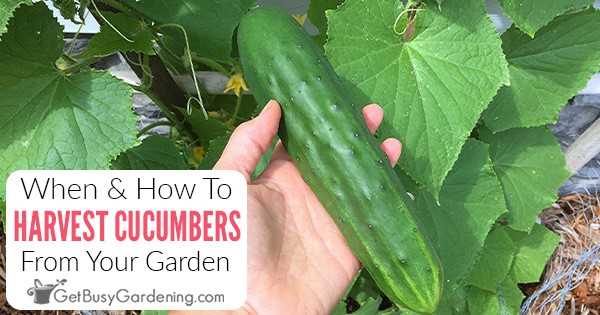
Cucumbers are a popular vegetable to grow in home gardens, but like any plant, they can be susceptible to pests. Identifying and controlling these pests is an important part of maintaining a healthy cucumber crop. Here are some common cucumber pests and natural pest control methods to help you keep your cucumbers thriving.
1. Cucumber Beetle
Cucumber beetles are small, yellowish-green beetles that feed on cucumber leaves, flowers, and fruits. They can transmit diseases to cucumber plants and cause significant damage. To control cucumber beetles naturally, you can try the following methods:
- Planting trap crops like radishes to attract cucumber beetles away from cucumber plants.
- Using floating row covers to physically exclude beetles from cucumber plants.
- Applying a layer of diatomaceous earth around cucumber plants to deter beetles.
2. Aphids
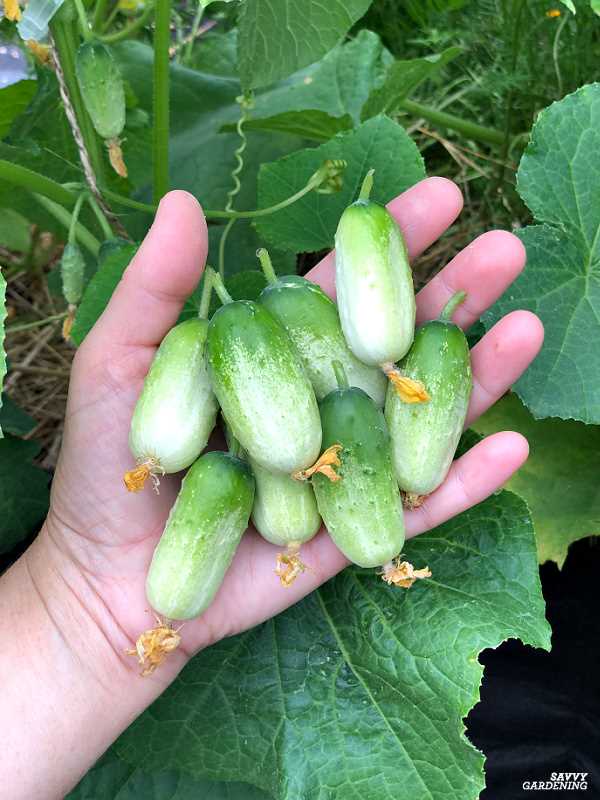
Aphids are small, soft-bodied insects that suck sap from cucumber plants, causing stunted growth and distortion. They can also transmit viruses to cucumber plants. Natural pest control methods for aphids include:
- Releasing beneficial insects like ladybugs and lacewings, which feed on aphids.
- Using a strong jet of water to dislodge aphids from cucumber plants.
- Mixing a solution of water and mild soap or neem oil and spraying it on affected cucumber plants.
3. Powdery Mildew
Powdery mildew is a fungal disease that affects cucumber leaves, causing a white powdery coating. It can hinder photosynthesis and reduce the yield of cucumber plants. To control powdery mildew naturally, you can try the following methods:
- Planting resistant cucumber varieties.
- Pruning cucumber plants to improve air circulation and reduce humidity.
- Applying a solution of milk and water to affected cucumber leaves.
4. Slugs and Snails
Slugs and snails are common pests that feed on cucumber leaves and fruits, leaving behind slimy trails. They can cause extensive damage to cucumber plants. Some natural pest control methods for slugs and snails include:
- Removing debris and weeds from the garden to eliminate hiding places.
- Using copper barriers or diatomaceous earth to create a physical barrier.
- Handpicking slugs and snails and disposing of them away from the garden.
By identifying cucumber pests early and using natural pest control methods, you can protect your cucumber plants and ensure a successful harvest. Remember to monitor your plants regularly and take appropriate action to keep your cucumbers healthy and pest-free.
“Question-Answer”
When is the best time to sow cucumber seeds?
The best time to sow cucumber seeds is in the spring, after the danger of frost has passed and the soil has warmed up. Cucumbers prefer warm temperatures and will not germinate well if the soil is too cold.
What is the best way to pick cucumbers?
The best way to pick cucumbers is to gently twist the cucumber off the vine or use a sharp knife to cut it. Be careful not to pull too hard, as this can damage the vine. It’s also important to pick cucumbers when they are still small and have a bright green color. Overripe cucumbers can be bitter and have tougher skin.
Can cucumbers be grown in containers?
Yes, cucumbers can be grown in containers. Choose a container that is at least 12 inches deep and wide enough to support the cucumber vines. Make sure the container has good drainage and use a well-draining potting mix. Cucumbers will also need support, such as a trellis or stakes, to grow vertically in a container.
How should cucumbers be trained to grow up a trellis?
Cucumbers can be trained to grow up a trellis by gently tying the vines to the trellis as they grow. Use soft garden twine or plant ties to loosely secure the vines to the trellis. Be careful not to tie them too tight, as this can damage the vines. Regularly check the vines and adjust the ties as needed as the cucumbers grow.
When are cucumbers ready to harvest?
Cucumbers are ready to harvest when they have reached their mature size and have a bright green color. Depending on the variety, this is usually when the cucumbers are 6 to 8 inches long. The cucumbers should also feel firm and have a crisp texture. Overripe cucumbers can be bitter and have tougher skin, so it’s important to harvest them at the right time.







